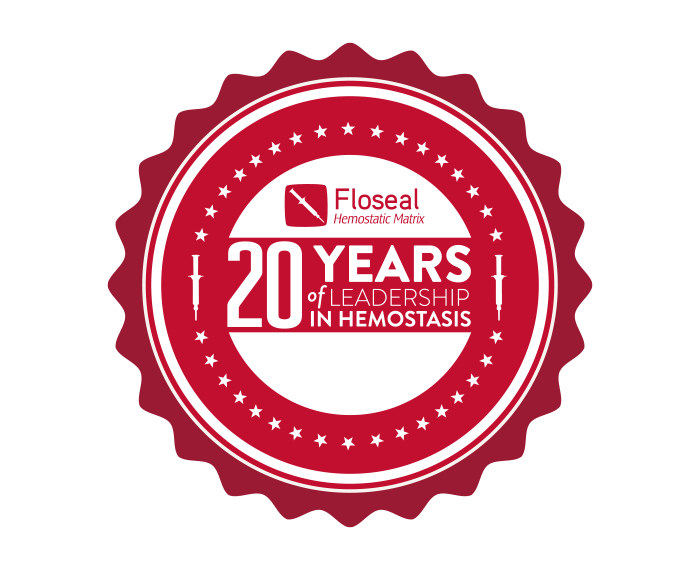FLOSEAL


Choose Better Outcomes. Choose FLOSEAL.
Inadequate surgical hemostasis and uncontrolled bleeding may lead to transfusion and/or other bleeding-related complications1, lower clinical outcomes and higher hospital costs2.
During the last 20 years, FLOSEAL Hemostatic Matrix has been shown to result in better clinical and hospital resource utilization outcomes.
Take an Active Approach to Hemostasis
FLOSEAL consists of a unique combination of patented gelatin granules and human thrombin to provide fast (2 min median time to hemostasis), effective hemostasis. Learn more about how FLOSEAL works.
Additional Product Benefits
The Leader in Hemostasis
For certain surgical procedures, use of FLOSEAL Hemostatic Matrix is associated with shorter length of surgery3, fewer intensive care unit days4, significantly lower risks of complications, blood transfusions and surgical revisions5.
Consistent Performance
FLOSEAL has been proven to perform fast and consistently across a range of bleeds6.
Health Economic Benefits
The use of FLOSEAL can result in improved Resource Utilization Outcomes and substantial Cost Savings for hospitals – up to $1.5M per year7 and $2,445 per spine procedure8.
Floseal Hemostatic Matrix Indication
FLOSEAL is indicated in surgical procedures as an adjunct to hemostasis when control of bleeding, ranging from oozing to spurting, by ligature or conventional procedures is ineffective or impractical.
Contraindications
Do not use FLOSEAL in patients with known allergies to materials of bovine origin.
Warnings
Do not inject or compress FLOSEAL into blood vessels.
Do not apply FLOSEAL in the absence of active blood flow, e.g., while the vessel is clamped or bypassed. Extensive intravascular clotting and even death may result.
FLOSEAL is not intended as a substitute for meticulous surgical technique and the proper application of ligatures or other conventional procedures for hemostasis.
FLOSEAL is not intended to be used as a prophylactic hemostatic agent to prevent postoperative bleeding.
Excess FLOSEAL Matrix (material not incorporated in the hemostatic clot) should always be removed by gentle irrigation from the site of application. Meticulous irrigation is required when used in, around, or in proximity to foramina in bone, areas of bony confine, the spinal cord, the brain and/or cranial nerves.
As with any implantable material, the use of FLOSEAL is not recommended in the presence of an active infection.
FLOSEAL should be used with caution in contaminated areas of the body. If signs of infection or abscess develop where FLOSEAL has been applied, re-operation may be necessary in order to remove the infected material and allow drainage.
Regardless of the type of surgical procedure, surgeons should consider the maximum swell volume of FLOSEAL, which is between 10 – 20%, after product is applied to source of bleeding and its potential effect on the surrounding anatomic areas. Maximum swell volume is achieved within about 10 minutes.
The safety and effectiveness of FLOSEAL for use in ophthalmic procedures has not been established.
FLOSEAL should not be used for controlling intrauterine post-partum bleeding or menorrhagia.
The safety and effectiveness of FLOSEAL has not been established in children and pregnant women.
Do not use FLOSEAL in the closure of skin incisions because it may interfere with the healing of the skin edges due to mechanical interposition of gelatin. The safety and effectiveness of the use of FLOSEAL Matrix as a carrier for antibiotic solutions or powders has not been established.
For safe and proper use of this device, please refer to the Instructions for Use.
CE 0123